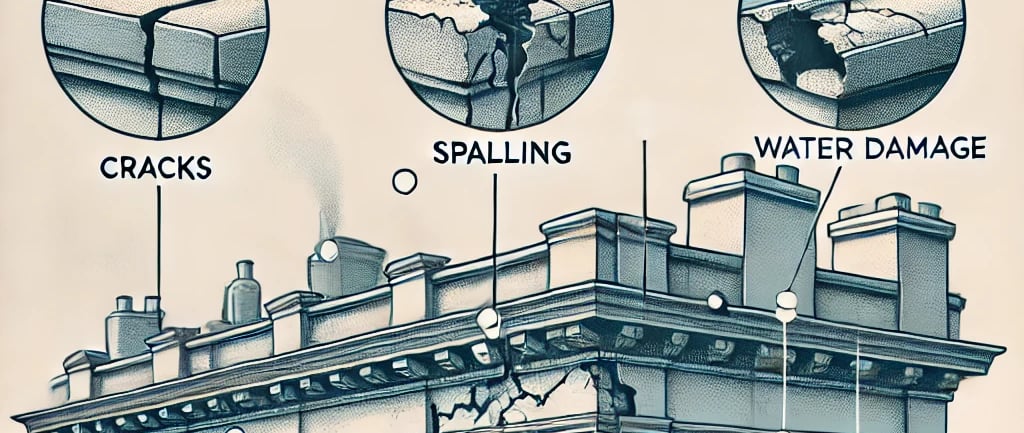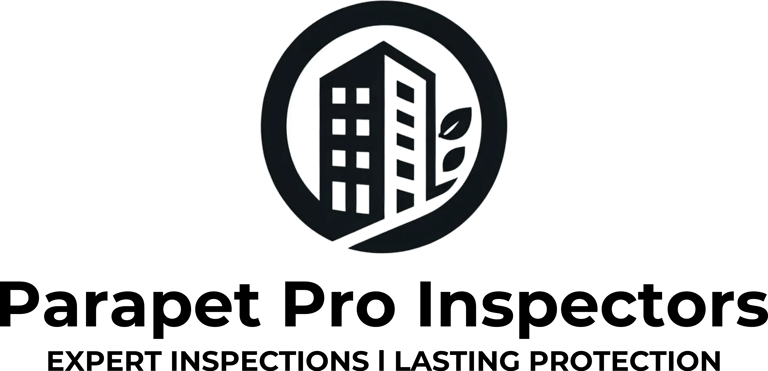Common Parapet Wall Issues and How to Fix Them
Parapet walls are essential for protecting buildings, but they can develop issues like cracks, spalling, water damage, and poor drainage over time. These problems can lead to structural risks and costly repairs if left unaddressed. This guide covers the most common parapet wall issues, their causes, and effective solutions such as sealing cracks, repairing damaged bricks, improving drainage, and reinforcing coping stones. Regular maintenance and professional inspections are key to preventing long-term damage and ensuring the safety and longevity of your building’s parapet walls.
PARAPET INSPECTIONS
Parapet Pro Inspectors
3/26/20252 min read


1. Cracks in Parapet Walls
Problem: Cracks in parapet walls can occur due to thermal expansion, settlement, or aging materials. These cracks allow water infiltration, which can lead to further structural damage.
Solution: Small cracks can be sealed using flexible masonry sealants or epoxy injections. For larger cracks, repointing or replacing damaged bricks and reinforcing the structure may be necessary. Regular inspections can help detect early signs of cracking before they worsen.
2. Spalling (Brick or Concrete Deterioration)
Problem: Spalling occurs when water penetrates the parapet wall, causing the brick or concrete to deteriorate, flake, or break off. This weakens the wall and poses safety risks due to falling debris.
Solution: The damaged material should be removed and replaced with new bricks or concrete. Applying a waterproof sealant or coating can help prevent further moisture infiltration. Ensuring proper drainage can also mitigate future spalling.
3. Water Damage and Leaks
Problem: Parapet walls are highly exposed to rain, snow, and moisture, which can lead to leaks and water damage. Poor flashing or mortar degradation often contributes to this issue.
Solution: Installing or repairing flashing at the top of the parapet can redirect water away from the structure. Repointing the mortar joints and applying a waterproof membrane can further enhance protection against water infiltration.
4. Loose or Deteriorating Coping Stones
Problem: Coping stones on top of parapet walls serve as protective caps, but they can become loose or deteriorate over time due to weather exposure and poor installation.
Solution: Loose coping stones should be reset using mortar or adhesive. If severely damaged, they should be replaced with new stones. Additionally, using metal flashing beneath coping stones can provide extra waterproofing protection.
5. Poor Drainage and Weep Hole Blockages
Problem: Parapet walls should have proper drainage to prevent water accumulation. Blocked or missing weep holes can cause water buildup inside the wall, leading to structural damage and mold growth.
Solution: Regularly inspect and clean weep holes to ensure they are functioning correctly. If necessary, install additional drainage solutions such as scuppers or flashing extensions to improve water runoff.
Final Thoughts
Maintaining parapet walls is essential for the safety and longevity of a building. Regular inspections, prompt repairs, and proper waterproofing techniques can prevent costly damage and extend the life of parapet walls. If you notice any signs of deterioration, consulting a professional parapet inspector can help address the issues before they become severe.
By staying proactive with parapet wall maintenance, property owners can protect their investments and ensure the structural integrity of their buildings for years to come.
